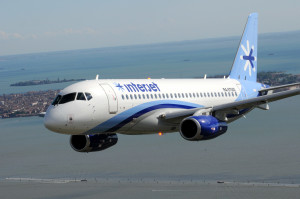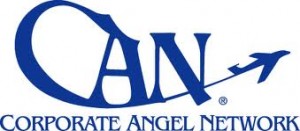Boeing to Increase 737 Production Rate to 52 per Month in 2018
October 3, 2014
Global demand for single-aisle airplanes remains strong
RENTON, Wash., Oct. 2, 2014 /PRNewswire/ — Boeing (NYSE: BA) announced today that it will increase production on the 737 program to 52 airplanes per month in 2018 in response to strong market demand from customers worldwide. Once the increase is implemented, the 737 program is expected to build more than 620 airplanes per year, the highest rate ever for the world’s best-selling commercial airplane.
“The 737 Next-Generation and 737 MAX airplanes offer our customers unparalleled efficiency and reliability,” said Boeing Commercial Airplanes President and CEO Ray Conner. “Whether for fleet growth or for replacement needs, the 737 enables market success for carriers due to lower operating economics and by providing a better passenger experience.”
Boeing currently produces 42 airplanes per month at its Renton, Wash., factory, and the company previously announced plans to increase the production rate to 47 airplanes per month in 2017.
“This increase is a recognition of the teamwork that achieved record level production rates while improving safety, productivity and quality,” said Beverly Wyse, vice president and general manager, 737 Program, Boeing Commercial Airplanes. “Strong efforts by Boeing employees, our suppliers and community support allow us to continue to build these fabulous airplanes in Renton for years to come.”
The 2014 Current Market Outlook, Boeing’s long-term forecast of air traffic volumes and commercial airplane demand, projects a need for more than 25,000 single-aisle airplanes over the next 20 years, worth $2.56 trillion total market value.
“For over a decade we have seen resilient demand for the 737 and a rate increase to 52 per month reflects the appetite for airplanes like the 737 MAX and Next-Generation 737,” said Randy Tinseth, vice president of Marketing, Boeing Commercial Airplanes. “Our thorough analysis tells us the single-aisle market continues to expand and is the fastest growing, most dynamic segment of the market.”
Boeing’s highly efficient and reliable 737 family is the proven market leader. To date, 266 customers worldwide have placed more than 12,100 orders for the single-aisle airplane – including more than 6,800 orders for the Next-Generation 737 and more than 2,200 orders for the 737 MAX. Boeing currently has more than 4,000 unfilled orders across the 737 family.
The production rate increase announced today is not expected to have a significant impact on 2014 financial results.
VECA Airlines award 5 year power-by-the-hour contract to AJW Aviation
October 2, 2014
London, 2nd October 2014: AJW Aviation, a specialist in transforming aviation efficiency, has signed a five year power-by-the-hour contract with new start-up Salvadorian operator, VECA Airlines. The contract will be managed by AJW’s Miami base and will cover the supply of spare parts for the airline’s fleet, providing essential support for the El Salvador flag carrier.
VECA Airlines was established in late 2013 and has its airline hub located in San Salvador at Monseñor Óscar Arnulfo Romero International Airport. A full support programme, complemented by onsite component stock, will commence on 15th October 2014 when the second aircraft is handed over following preparation in Miami.
AJW is the preferred choice for start-up airlines, offering total flexibility and scalable service levels as they develop their routes and fleets to fulfil their growth ambitions.
This new contract with VECA Airlines will add to AJWs growing portfolio across Latin America where it is building a reputation for both for its comprehensive power-by-the-hour programmes, and the component repair and overhaul services delivered by AJW Technique in Montreal. “AJW provides support for airlines building their networks to increase mobility around this area of the world” says Boris Wolstenholme, CEO – AJW Aviation. “We have proactively targeted the Latin American region to offer an unparalleled breadth of service for an increasingly diverse number of operators. With new airports planned and in progress, as well as many new airlines operating under the ‘low-cost carrier’ business model, we consider the region to be a key area of investment for AJW throughout 2014 and beyond.”
The SSJ100 Marks 1 year of Operations with Interjet
October 1, 2014
Barcelona, ERA General Assembly – October 1, 2014
The Sukhoi Superjet 100 aircraft celebrates its first anniversary of operations with Interjet. On September
18, 2013 the first SSJ100 entered into service with the Mexican airline.
Up to the anniversary date, the Interjet fleet logged more than 12.000 flight hours and 11.400 flight cycles.
The maximum utilization in a day was over 11 flight hours.
Starting from the EIS, the Interjet SSJ100 fleet has confirmed outstanding results in terms of
performance in the typical high-altitude environment of Mexico.
According to the airline’s operational reliability report, the SSJ100 is showing a technical dispatch
reliability’s average of 99%. In 1 year of operations, the Interjet SSJ100 fleet hasn’t logged any
cancellations due to technical reasons.
The current fleet of nine SSJ100 aircraft in service is operated from Mexico City to various Mexican
destinations, such as Torreon, Tijuana, Puerto Escondido and Acapulco. The longest flight performed
was Mexico City(MEX) – Tijuana(TIJ) of 3 flight hours and 09 minutes.
The fleet leader is the first delivered SSJ100 (MSN 95023), which logged more than 2400 FH and 2300
FC starting from the EIS in September 18, 2013.
“We are very proud of these operational results – states Nazario Cauceglia, CEO of SuperJet
International – they confirm that the SSJ100 is a competitive product and offers in today’s market the
ELITE Sim Centers Grand Opening
September 23, 2014
ORLANDO, Fl. – September 23, 2014 – ELITE Simulation Solutions announces the opening of the first international ELITE Simulation Training and Safety Management Centers™ known as ELITE Sim Centers™, in Orlando, Florida and Dubendorf, Switzerland.
�
ELITE Sim Centers in Orlando is hosting a Grand Opening event on Saturday October 4, 2014 from 10am-3pm. During this time, pilots, instructors, and aviation enthusiasts are encouraged to test fly—at no charge–the simulators, tour the facility, and enjoy complimentary refreshments. ELITE Sim Centers will be offering 25% off of any simulator session booked by those attending the event, and will also be giving away one free GCA-ANR music/phone interface, noise reducing headset, a $249.00 value. Enter to win the headset by registering on their website www.ELITESimCenters.com/scheduling or follow directions through facebook.com/ELITEsimcenters, one winner will be selected on October 4 (do not need to be present to win).
�
ELITE training centers are multi-faceted Aviation Resource Learning Centers or, as described by CEO, John Dixon, “a mental gymnasium for pilots that will foster a culture of safety in the flying community. Since flying aircraft are exercises in risk management, learning and staying proficient is crucial for managing aviation safety. Our goal is to provide an atmosphere and the resources that will contribute to the safety, proficiency and confidence of all pilots.”
�
ELITE Centers provide a stress-free environment for pilots to learn, rehearse, review, practice, socialize and turn training into an enjoyable experience. The Centers feature multiple FAA and EASA approved aviation training devices that range from simple, complex, twin piston and twin turbine airplanes to helicopters of twin turbine, single turbine and piston design. The Center is also complete with a classroom, conference rooms, a resource library and testing facility. The Center is designed for individual pilots of all skill levels. The Center is also designed to be used by aero clubs, enthusiasts, students, and instructors. Additionally, local flight schools looking for space, facilities, and aviation training devices to enhance their own flight training programs are encouraged to use the Center.
�
Simulators can be scheduled on-line and freelance instructors are welcome to register on our website as an available resource for pilots looking for specific expertise.
LATAM Airlines Group plans new international flights for 2015
September 23, 2014
· The project will improve connectivity in Latin America, North America and Europe
· LAN will operate a daily route from Santiago to Milan with a connection in Sao Paulo.
· TAM plans to launch service to Toronto, Barcelona and Cancun as well as a new Brasília-Orlando route
São Paulo, September 22. – In line with its fleet planning, the LATAM Airlines Group plans to launch new international flights in 2015. This initiative will strengthen the connectivity offered by the group in Latin America, North America and Europe.
One of the new features that passengers will be able to enjoy is expected to take place at the end of 2015, when LAN will operate daily flights from Santiago to Milan. This flight will have a layover in Sao Paulo. (The trip to Milan is currently done by TAM from Sao Paulo, and will be operated by LAN in order to strengthen connectivity from South America to Europe and improve in-flight experience of the passengers, as this route will be made with modern Boeing 787 fleet).
Meanwhile, TAM plans to create direct flights between São Paulo and Cancun, Mexico before the end of this year and between São Paulo and Barcelona, Spain by the high season in mid-2015. The carrier also expects to launch, by mid-2015, a new flight to Toronto, Canada from São Paulo, with a layover in New York.
The routes between Brazil and the United States are also expected to be strengthened with the creation of a Brasília-Orlando flight planned for the third quarter of next year, as well as more frequencies on its Brasília-Miami and São Paulo-Miami service.
The new routes will offer an even better connection network for our customers, create highly qualified jobs and generate new opportunities for our employees.” The plan calls for the creation of approximately 230 new jobs for flight crew members on long-haul flights.
The airline will also increase its use of Boeing B767 aircraft, which feature full-flat seats in Business Class. Another development will be the improved internal configuration of the Boeing B777-300 ER to provide passengers with even greater comfort.
By the end of 2015, it should also become the first airline in the Americas to receive delivery of the newly launched Airbus A350.
More destinations in Europe
The plans to launch direct service to Barcelona aims to meet the demand from passengers traveling to Spain. TAM already operates direct service between São Paulo and Madrid and the launch of service to Spain’s second-largest city will allow more Brazilians to visit the country.
Greater connectivity in North America
For North America, in addition to the launch of Toronto service and of Brasília-Orlando service, the São Paulo-Miami route is expected to receive additional frequencies in the second half of 2015. Meanwhile, the Brasília-Miami route should reach seven weekly frequencies by the third quarter of 2015.
LAN plans to increase weekly frequencies from 10 to 14 on its Santiago-Miami service, which will be implemented over the course of next year. The airline also expects to expand its use of its Boeing B787 fleet.
Garmin Media Advisory: AOA FAA Approved, Now Shipping
September 19, 2014
Garmin is pleased to announce our Angle of Attack (AOA) system is now shipping and approved by the FAA for installation in a wide variety of general aviation aircraft. The entire system is comprised of the GI 260 AOA indicator, GAP 26 angle of attack probe and GSU 25 air data computer, which combine to display safety-enhancing AOA and audible alerts throughout critical phases of flight.
The new Angle of Attack system supports the FAA’s recent initiative to broaden adoption of AOA displays to improve safety within general aviation. Garmin’s GI 260 is designed for a quick, at-a-glance understanding of AOA and offers audible alerts for high-workload situations. When approaching an impending stall, the GI 260 AOA indicator offers progressive audible and visual alerts as the aircraft approaches stall angle of attack. Because the Garmin AOA system corrects for weight, g-loading, density altitude and airspeed, it offers a higher level of accuracy compared to lift reserve indicators. For quick and easy installation, an adjustable pitot mounting mast is provided, which may conveniently be attached to a new or existing inspection panel.
The Garmin AOA system is now available starting at $1,499. Customers may choose from a variety of packages that accommodate 14V and 28V aircraft, including heated and unheated options. Additionally, the GI 260 indicator is available as an option for G3X and G3X Touch for $249.
Prominent Aviation Safety Experts Address Risk Mitigation Topics
September 18, 2014
Miami (September 17, 2014) – The 5th Pan American Aviation Safety Summit concluded last week at the World Trade Center of Curacao. The event featured the presentation of risk mitigation programs, garnering the attention of over 200 delegates representing airlines, civil aviation authorities, airports, manufacturers and regional and international industry associations.
Over 50 airline representatives attended the Summit and high-caliber moderators and panelists created the dynamics fostering interactive and insightful sessions that delved in detail into safety challenges in the industry, as well as initiatives to counteract their effect. The agenda featured breakout sessions, a first among Safety Seminars, which provided an ideal setting for exchanging best practices between safety experts present. The topics ranged from Safety Priorities for Latin America and the Caribbean and the latest developments on Loss of Control in Flight (LOC-I), Control Flight into Terrain (CFIT) to Mid-air Collisions (MAC) and Runway Excursions (RE), as well as the optimization of the use of data and technology to identify risk trends.
Curacao´s Minister of Traffic, Transport and Urban Planning, his Excellency Mr. Earl Balborda, issued a message to convey the importance aviation merits from the states in the Caribbean and the role played by the industry in the sustainable development of the island nation´s economy. The North, Central and Caribbean Regional Director of the International Civil Aviation Organization (ICAO), Loretta Martin and the South America Regional Director of ICAO, Franklin Hoyer, were also in attendance, as were Oscar Derby, Director of the Civil Aviation Authority of Curacao & RASG-PA Co-Chairman, Gerardo Hueto, Chief Engineer Aviation Systems Boeing & RASG-PA Co-Chairman and Albert Kluyver, CEO of the hosting airline, InselAir.
“The ALTA Safety Summit is one of the most significant gatherings of safety professionals in the world, where industry leaders share safety-critical information regardless of livery, or regional markets. The collaborative safety efforts in the Latam region are contributing to the safety enhancement of the Global Air Transport System ” said, David Zwegers, Safety Director Latin America and Caribbean for Airbus. Carlos Cirilo, Director for Safety and Operations for the Americas at IATA, added, “The safety Summit is the single most important event every year, for the aviation industry in the LATAM/CAR region, to meet face to face and discuss and fine-tune the strategies and programs that will lead us to a safer sky for our passengers”.
Santiago Saltos, Senior Industry Affairs Manager for ALTA and Chairman of the conference, stated, “We are very pleased with the outcome of the conference. It is a team effort, involving states and industry, to produce an agenda that addresses risk mitigation initiatives that add value to the delegates´ experience and to have experts of the stature that were present here in the past few days. This is a great opportunity for the Aviation Safety community to acquire a comprehensive vision of the industry´s efforts undertaken by RASG-PA members to contribute to the improvement of safety in our region.”
The conference, which framed the 7th Annual RASG-PA Plenary Meeting was hosted by the Regional Aviation Safety Group-Pan America (RASG-PA) and the Curacao Civil Aviation Authority (DGAC), in partnership with the Latin American and Caribbean Air Transport Association (ALTA) and the International Civil Aviation Organization (ICAO).
Official sponsors of the Summit were the Curacao Tourism Board and the Ministry of Traffic, Transport and Urban Planning, as well as InselAir as the official airline. Curacao was selected from amongst various top destinations and has welcomed the conference and its organizers and partners to make the event possible and successful. Additional Sponsors were Aerobytes, Airbus, Boeing, Embraer, Flight Safety Foundation, the International Air Transport Association (IATA), Rockwell Collins and Zodiac Aerospace. The support of these sponsors and their commitment to the improvement of aviation safety was indispensable for the execution of this event.
New KA 350 Swept Composite Propellers Begin FAA Certification Testing at Raisbeck Engineering
September 16, 2014
September 10, 2014 — Seattle, Wash. — Raisbeck Engineering’s latest development in swept-blade propeller technology, the new Composite Swept-Blade 5-way Propeller for the Beechcraft King Air 350 series, has begun FAA certification flight testing at Boeing Field, Seattle, Washington. The Raisbeck/Hartzell team completed all ground and flight vibration and governor output pressure surveys Sunday, September 7th, 2014. The program began company and FAA certification flight testing the following Monday, scheduled to be completed by the end of September, 2014.
The cooperative development program between Raisbeck and Hartzell is the 3rd in the Swept-Blade series; the first two were for the King Air 200 and C90/E90 series. Both programs have proven very successful in sales and deliveries since the launch of the partnership in late 2009. Since deliveries began in January, 1985, there are close to 1500 airplanes equipped with Raisbeck/Hartzell propellers – a true testament to the 31 years of successful development and partnership between Hartzell Propeller Inc and Raisbeck Engineering.
Joe Brown, President of Hartzell Propellers Inc, commented “Working side by side with Raisbeck Engineering for over a third of a century has been enormously gratifying to both our companies, in terms of technology advancement and resultant sales. For us, we wouldn’t change a thing about our relationship. As someone once said, ‘If it works, don’t fix it’. We expect to continue down this path.”
Raisbeck Engineering’s CEO James Raisbeck added his enthusiastic support saying, “Our parallel development and certification programs began with an honest look at how we could work together to maximize the benefits to our customers, while minimizing the cost and calendar time to achieve our desired results. It is working well; never a measurable glitch, and always an impressed and happy customer”.
The new King Air 350 propellers will be introduced at this year’s NBAA in October, with production deliveries scheduled for July, 2015. Raisbeck will also offer an official “King Air 350 5-Bladed Propeller Wait List” at NBAA, which will not require a deposit but will be on a first-signed, first-availability basis. More details and preliminary performance improvements will be available at NBAA in Orlando, Florida this year. Raisbeck Engineering will be at NBAA booth #720.
Raisbeck Engineering continues in the tradition of its founder, dedicated to the improvement in performance and productivity of business and commercial aircraft through the infusion of advanced technology into in-service and new production aircraft.
Superior Aviation Group appoints Ana Fontes Director International Business Development
September 15, 2014
Ms. Fontes will be responsible for developing international business opportunities
for the Superior Aviation Group companies, including coordinating sales and development efforts for the recently announced Superior Aviation Town project.
Coppell, TX, September 14, 2014 — Timothy T. (Tim) Archer, Group CEO, of the Superior Aviation Group announced today that Ana C. Fontes has been appointed as the Group Director of International Business Development.
“The Superior Aviation Group of companies has been enjoying continued success and we are now ready to begin growing into global markets,” Archer stated. “Ana’s considerable experience with the international aspects of the general aviation industry and her multi-lingual, multi-cultural background will be a tremendous asset as we initiate those efforts.”
“Ana’s current responsibilities of representing the Group’s Flagship company, Superior Air Parts in Brazil, will not only be absorbed, but be expanded to include the rest of the world,” he said. “In addition, she will be heavily involved with identifying and coordinating our efforts with prospective tenant companies interested in participating in the exciting new Superior Aviation Town and Executive Airport development project.”
“This is an extremely exciting opportunity and I could not be more appreciative of the confidence that the Group has shown in my abilities,” Ms. Fontes said. “This new position will allow me to fully utilize my experiences in and enthusiasm for not only identifying the growth opportunities found in today’s global aviation markets, but developing ways to maximize their potential for our Group companies.”
Prior to her recent appointment, Ms. Fontes was the Brazilian sales and marketing representative for Superior Air Parts, Inc., a member of the Superior Aviation Group. Before starting her own company, Fontes Marketing Consulting, which specializes in helping U.S.-based companies open new markets in Brazil and South America, she served as Corporate Marketing and Americas Sales Director for Mistral Engines, S.A.
Ms. Fontes is also the Director of International Affairs for AOPA Brazil (APPA).
She holds a B.A. in Business Administration from the FCETM- Economic Sciences University of Triângulo Mineiro – Brazil.
Beluga celebrates the 20th anniversary of its first flight
September 12, 2014
Flight hours per aircraft have since doubled and will do so again by 2017
With its maiden flight on September 13, 1994, the popular Beluga cargo aircraft, affectionately named after the white whale because of its remarkable shape, is celebrating this week twenty years of transporting Airbus component parts between Airbus’ European manufacturing sites.
Since 1995, the fleet of five Beluga aircraft replaced the ageing Super Guppy transporters in order to supply the Airbus final assembly lines in Toulouse and Hamburg. Today, more than sixty flights are performed each week between eleven sites, carrying crucial parts for all of the Airbus programmes, including the A380*.
The Beluga fleet is operated by Airbus Transport International (ATI), an Airbus subsidiary airline, and each Beluga crew is composed of a pilot, a co-pilot and a flight engineer.
With the production start of the A350 XWB in 2012 and the production ramp-up on other Airbus programmes, the Beluga activities again will substantially increase over the next five years.
In order to accompany this challenge, Airbus launched in 2011 the Fly 10 000 project. Flight crew numbers and flight hours have grown and loading procedures have been further optimized, with the opening of new integrated loading facilities in Hamburg and Bremen in Germany and Saint-Nazaire in France. Broughton, UK and Getafe, Spain will follow soon. Fly 10,000 should allow the Beluga fleet to double its activities by 2017 (from 5,000 to 10,000 flight hours).
“The Beluga is an essential element of Airbus’ integrated logistics and production system. It is thanks to its reliability and engagement of the Beluga teams that we can fulfil our constant pursuit of efficiency”, said Günter Butschek, Airbus Chief Operating Officer.
The Beluga is based on the twin-engine A300-600R, appreciated for its reliability and its cost-effectiveness. It is powered by General Electric CF6-80C2 engines. With its impressive dimensions (56 m long, 17 m high, a fuselage diameter of 7.71 m and a main-deck cargo volume of 1,400m3), the Beluga is the champion of its category (compared with the Antonov AN-124 or even the C-17). The Beluga can carry a maximum payload of 47 metric tonnes non-stop over a range of 1,660 km/900 nm.
*only the Vertical Tailplane and tailcone, all other A380 components being transported through the “multimodal transport system (sea, river, road).










